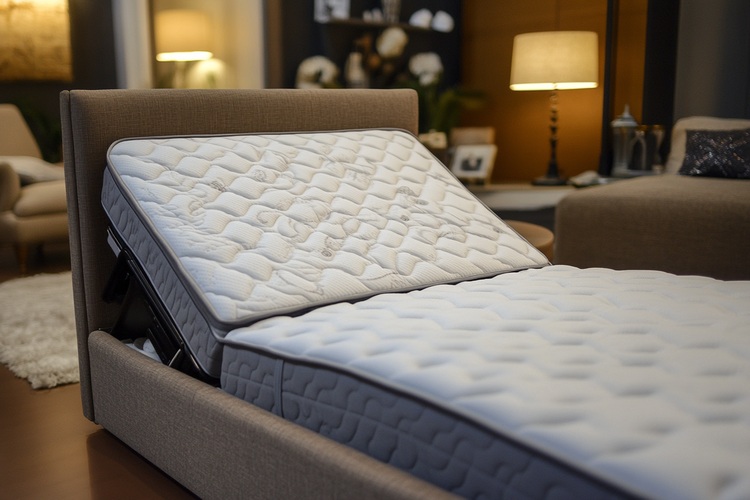Choosing the Perfect Bed: A Complete Buyer's Guide
Finding the right bed affects sleep quality, comfort, and long-term health. This guide walks you through frame materials, mattress support options, storage features, and design styles so you can choose a bed that fits your body, bedroom, and budget. Learn about price ranges, durability, and practical tips for selecting a bed that delivers restful sleep and lasting value.

Bed Frame Materials and Construction
Bed frames are available in a variety of materials, each offering different benefits. Solid wood frames are prized for their strength, timeless look, and lifespan, though they can need occasional care to prevent scratches and warping. Metal frames often cost less and deliver sturdy support with a lighter visual footprint, but they can creak over time if not well assembled. Upholstered frames add a soft, luxurious appearance and extra comfort when sitting up, yet they require more frequent cleaning to maintain their look.
Construction details matter as much as material. Look for reinforced joints, center supports on larger sizes, and certifications for sustainably sourced wood if that is important to you. Platform beds remove the need for a box spring by offering a solid or slatted surface, while adjustable frames include motors and hinges that let you raise the head or feet for reading, watching TV, or easing certain medical symptoms.
Types of Mattress Support Systems
The base you choose directly affects mattress performance and lifespan. Traditional box springs cushion and distribute weight, helping older innerspring mattresses perform as intended. Platform beds with slatted bases provide firmer support and better airflow, which can reduce moisture buildup and help cooler sleep. The spacing and material of slats influence how firm the mattress feels, so check manufacturer recommendations.
Adjustable bases bring positional flexibility; they can improve comfort for people who need to elevate their head or legs for circulation, acid reflux, or snoring. Some adjustable setups also combine with specialized mattresses designed to flex without degrading. When choosing a support system, consider mattress compatibility, desired firmness, and whether improved ventilation or shock absorption is a priority.
Storage and Functionality Features
Modern beds often double as storage units, which is especially useful in smaller rooms. Integrated under-bed drawers maximize dead space and keep linens, seasonal clothing, or bedding easily accessible. Headboards with built-in shelving or compartments eliminate the need for a separate nightstand and are great for small bedrooms or apartments. Storage ottomans and benches at the foot of the bed offer flexible seating and hidden storage.
Other functional features to consider include built-in USB ports, wiring channels for bedside lamps, and lift-top mechanisms that provide full under-bed access. Think about how you live in your bedroom: do you need extra clothing space, a spot to store paperwork, or simpler cleaning access beneath the bed? Choose features that match daily routines without cluttering the room.
Design Styles and Aesthetics
Bed styles span a wide range, from sleek contemporary pieces to ornate traditional frames. Minimalist platform beds emphasize clean lines and low profiles that blend well with modern interiors. Traditional beds often feature carved headboards or footboards and can serve as a focal point in a classic bedroom. Modern farmhouse designs mix rustic textures with neutral palettes for a cozy, updated look.
Four-poster and canopy beds make dramatic statements and work best in rooms with enough height and space. Upholstery, wood finishes, and hardware all contribute to the overall feel: choose tones and textures that complement your current décor while factoring in how the piece will age with your home.
Popular Bed Options and Price Comparisons
| Bed Type | Average Price Range | Key Features |
|---|---|---|
| Basic Platform Bed | $200-500 | Simple design, no box spring needed |
| Storage Bed | $600-1,200 | Built-in drawers, practical organization |
| Adjustable Frame | $800-2,500 | Customizable positions, remote control |
| Four-Poster Bed | $1,000-3,000 | Classic design, dramatic presence |
| Smart Bed | $1,500-4,000+ | Sleep tracking, climate control |
Prices, rates, or cost estimates mentioned in this article are based on the latest available information but may change over time. Independent research is advised before making financial decisions.
Choosing for Long-Term Value
When comparing options, prioritize long-term value over the lowest upfront price. Higher-quality construction and premium materials often translate to greater durability and better sleep, which can make them more economical over time. Account for additional costs like delivery, setup or assembly fees, mattress compatibility, and warranty coverage. A mattress and frame that fit well together can prevent premature wear.
Try to test mattresses when possible, read warranty terms carefully, and verify what is covered. For some purchases, a white-glove delivery option that includes assembly can be worth the extra cost if you want a hassle-free setup.
Final Considerations
Selecting the right bed means balancing comfort, support, aesthetics, and functionality. Think about your sleep habits, any health concerns, available space, and how the bed will be used beyond sleeping. Prioritize features that will improve sleep quality and daily convenience, and remember that thoughtful investment now can deliver better rest and reduced replacement costs later.
This article is for informational purposes only and should not be considered medical advice. Please consult a qualified healthcare professional for personalized guidance and treatment.






